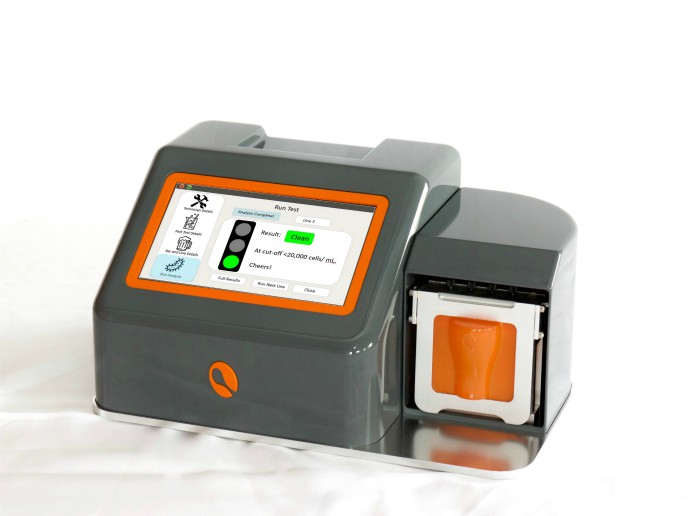Pioneering method for on-site testing and monitoring of beer quality
At present, breweries have little control over the quality of draught beer delivered to customers. While kegs are sterile leaving the breweries, the moment they are connected to a beer line, there is a risk of contamination. “Agar plating is the gold standard method for detecting levels of contamination in beer served from the tap, but it’s time-consuming, can’t be performed on-site and test results take up to 5 days,” says Vivienne Williams, coordinator of the EU-funded INISH MINI-BAR project. The adenosine triphosphate luminometer test is quicker than agar plating, but doesn’t measure levels of contamination directly from beer and is less reliable. On-site beer quality monitoring done differently INISH MINI-BAR addressed both methods’ limitations by developing a portable device that rapidly and accurately analyses the levels of bacteria, yeast and debris in draught beer on-site and directly from the tap. It enables the consistency of cleaning to be monitored, thus enabling beer line cleaners to adjust their cleaning schedules as needed. The innovation also identifies problem areas or taps in bars. These areas may be associated with parts of the bar that aren’t being cleaned correctly or used enough. Robust with an easy-to-use touchscreen display, the device integrates microfluidic sample handling and impedance detection on-chip with advanced electronics. This minimises sample handling and generates results in just 60-90 seconds. Impedance detection allows bacteria, yeast and debris to be counted and analysed. The innovation requires minimal sample preparation and results are easy to interpret. A red light indicates that a sample contains above 20 000 particles/mL. In such cases, the beer line needs to be cleaned immediately. A green light shows that a line is clean. Competitive advantage Project partners performed trials to test levels of contamination in 40 beer samples from bars in Dublin. They carried out agar plating on the same samples to assess the reliability and accuracy of the results gathered from the developed technology. Results show that the device is an excellent alternative to the lab-based agar plating. In partnership with a beer line cleaning company, the project team carried out an on-site field trial in the United Kingdom. The device successfully demonstrated the ability to identify problem areas in bars and allow line cleaning routines to be validated. Additional on-site trials are planned throughout 2019 around the world in collaboration with major brewing and beer line companies. One of the key environmental benefits of this novel technique is the considerable reduction in water consumption. It’s expected to reduce the frequency of line cleaning by about 20 %, saving millions of litres in one territory alone. “INISH MINI-BAR will ultimately help beer companies and bar owners increase profits, reduce lost customers and do damage control because of poor-quality products,” concludes Williams. “For patrons, there’s only one test that matters – the quality of beer served.” Given the increasing popularity of low- and non-alcoholic beers that are nevertheless more susceptible to bacterial contamination, the technology may prove even more useful.
Keywords
INISH MINI-BAR, beer, contamination, bacteria, agar plating, beer line, draught beer, yeast, bars

